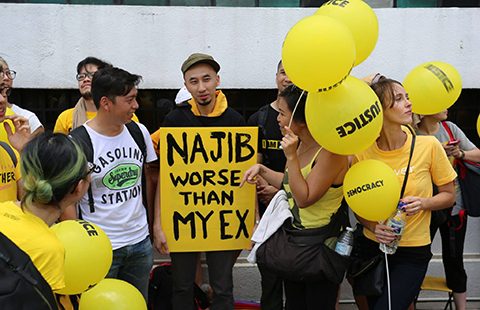Gerhard Hoffstaedter reports from the middle of Malaysia’s massive march for clean politics taking place this weekend.
Bersih (‘clean’ in Malay) is a coalition of non-governmental organisations, which demands free and clean elections in Malaysia.
They began their quest to achieve this in late 2006 in anticipation of the 2008 general elections. Their first rally in 2007 drew large crowds of Malaysians from all major ethnic backgrounds in a country where ethnicity remains a hotly contested identity marker and where the majority continues to benefit from affirmative action policies funded from government coffers.
Thus a large Malay turnout demonstrated dissatisfaction with the ruling coalition government and a growing realisation that Malaysians were getting tired of a staid political system that had allowed the ruling coalition to retain a two-thirds majority in parliament since independence.
Many believed that Malaysia was ready to give opposition rule at the federal level a go.
The 2008 elections resulted in huge losses for the government – they lost their two-third majority – but they managed to hold on to power federally. Gerrymandering, the practice of redrawing election district lines to give one party an advantage, phantom voters on the electoral roll and postal votes were seen as particular issues going forward and subsequent bersih protests in 2011 and 2012 demanded the government change these practices and dismiss the electoral commission, which was widely seen to condone and support them.
The government dragged their feet and another controversial election in 2013 ensued that saw the ruling coalition returned even though the opposition won the popular vote and claimed electoral fraud had cost them victory.
This takes us to Bersih 4 this weekend, another event for Malaysians to mark their dissatisfaction with the government over how elections are carried out and how little influence Malaysians have in the interim between elections. Calls for more transparency and good governance reached a crescendo when allegations of corruption against Prime Minister Najib Razak became public.
I do not have space to go into the details of a highly publicised US $700 million ‘donation’ that ended up in Najib Razak’s personal bank account, suffice it to say that it made many people angry, especially after the Prime Minister cleansed his cabinet of anyone who dared raise questions. Corruption has long been a mainstay in politics and everyday business in Malaysia, but the brazenness with which the political elite reacted to the allegations caught many by surprise.
Bersih 4 set their rally date to tie into merdeka (independence) day celebrations on 31 August and couched their continued demands of free and fair elections in terms of a patriotic duty of Malaysians to continue defending and building on their founding fathers’ legacy of a multi-ethnic and rule based polity.
The government, too, is looking back to its own history to defend what they deem sacred; their nationalist narrative of how independence was won from the British.
Both look to Dataran Merdeka as a hallowed ground and the government’s actions of barricading it against bersih protesters may be a hollow victory. Independence square remains in government hands, but the only people within it are police officers.
Protesters meanwhile have marched, sang, conducted lectures, speeches and made their rally cries known all around Dataran Merdeka, encircling but never breaching the cordoned off area.
The following photo essay paints a colourful picture of the all-important rally.
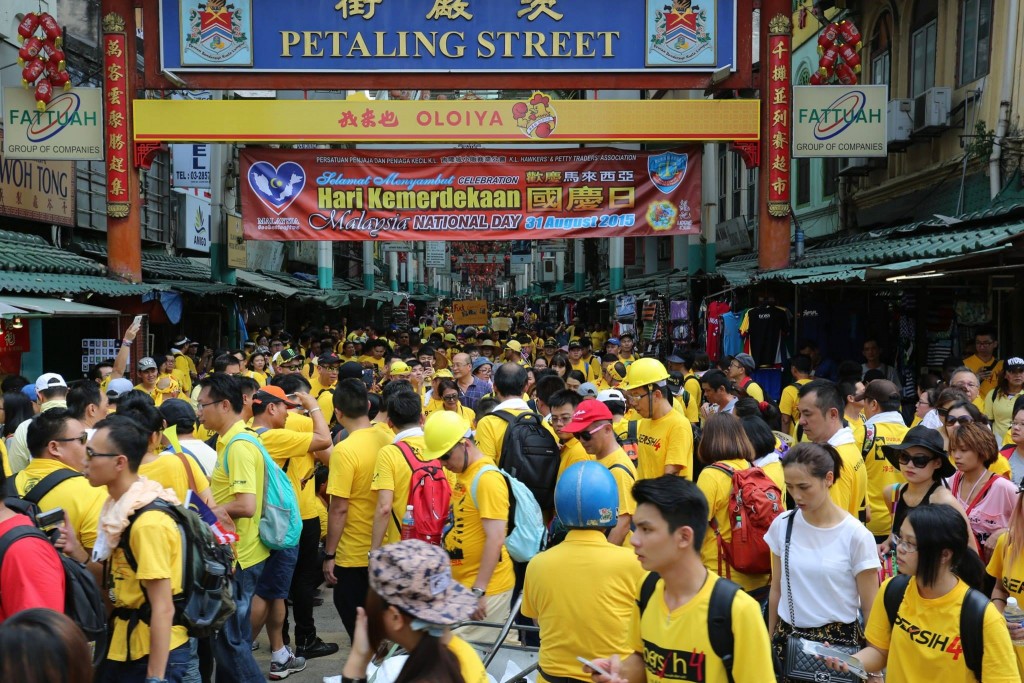
Crowds converge in Petaling Street in Chinatown ahead of 2pm marches towards Dataran merdeka. People are jubilant, excited and almost all are wearing the banned Bersih 4 t-shirts. Last night the government banned yellow shirts with Bersih 4 on them, but most people took no note, some coloured over the four or wore Berish 2 t-shirts.
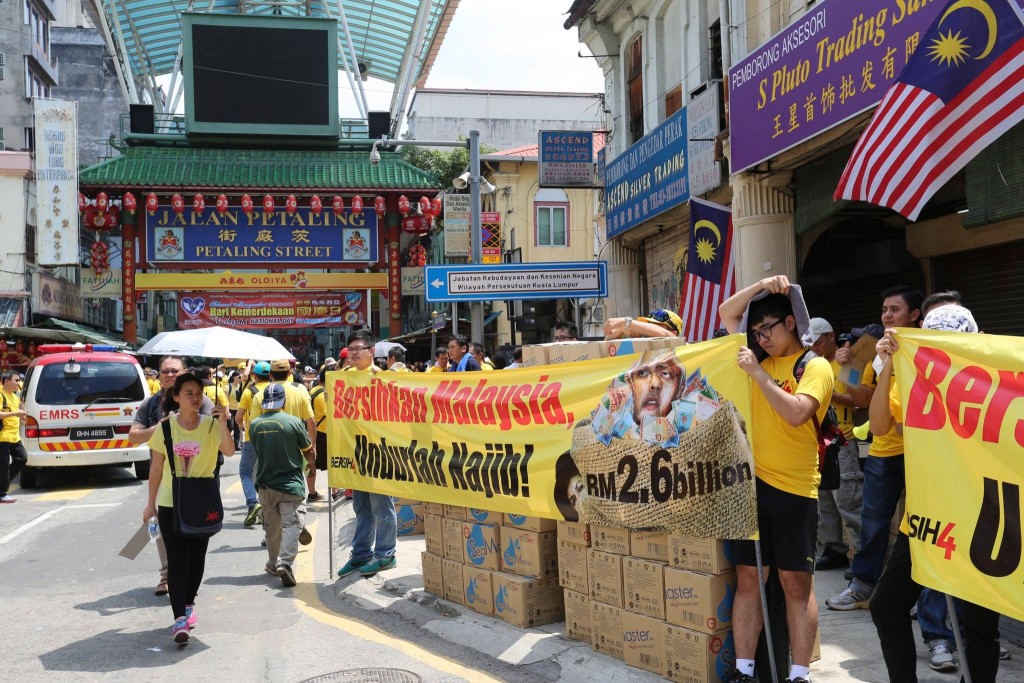
Protesters demand: ‘Bersihkan Malaysia, undurlah Najib!’ – Clean Malaysia, resign Najib! with a picture of Najib with his 2.6 billion Ringgit (approx US $700 million). Behind the banner free water is handed out to protesters.
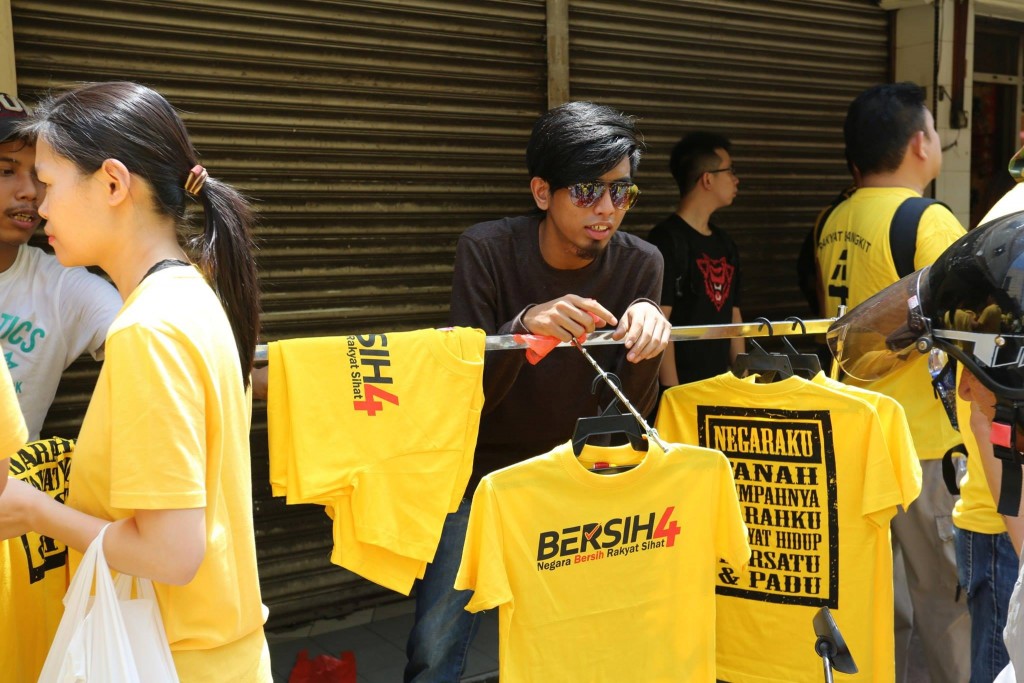
Although the t-shirts were banned by the government many protesters wore them. In Chinatown last minute shoppers could still get their hand on them.
This one says: Negara bersih, rakyat sihat – a clean country, a healthy people.
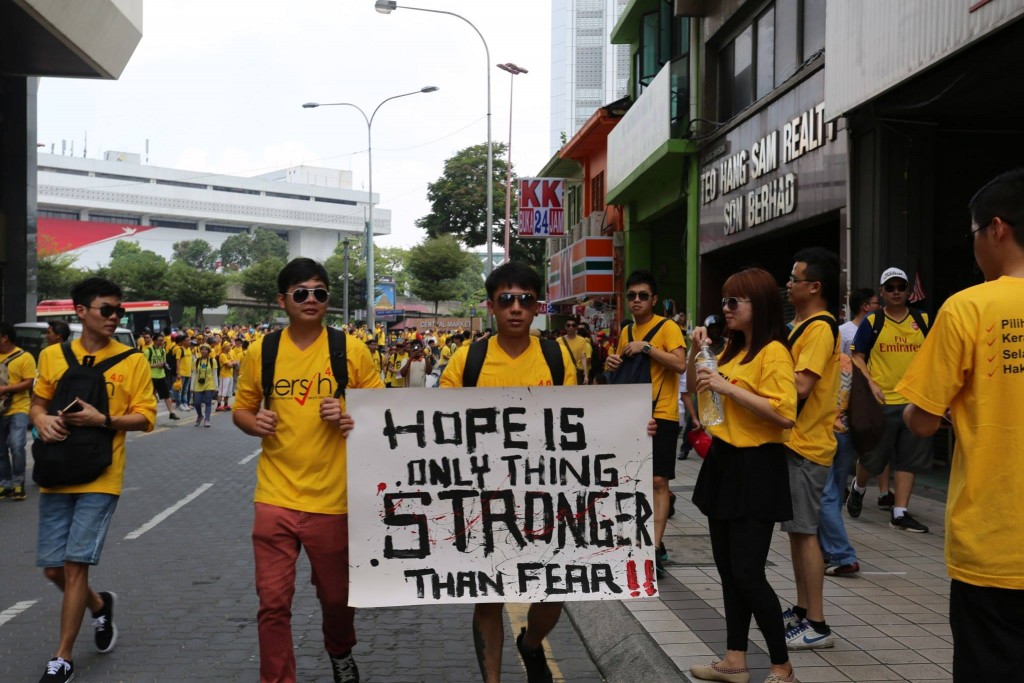
Close to Pasar Seni (central market) protesters coming and going ahead of the 2pm rally start. Many protesters were in small groups of friends and family. Ahead of 2pm the restaurants were packed out with protesters having lunch and meeting up.
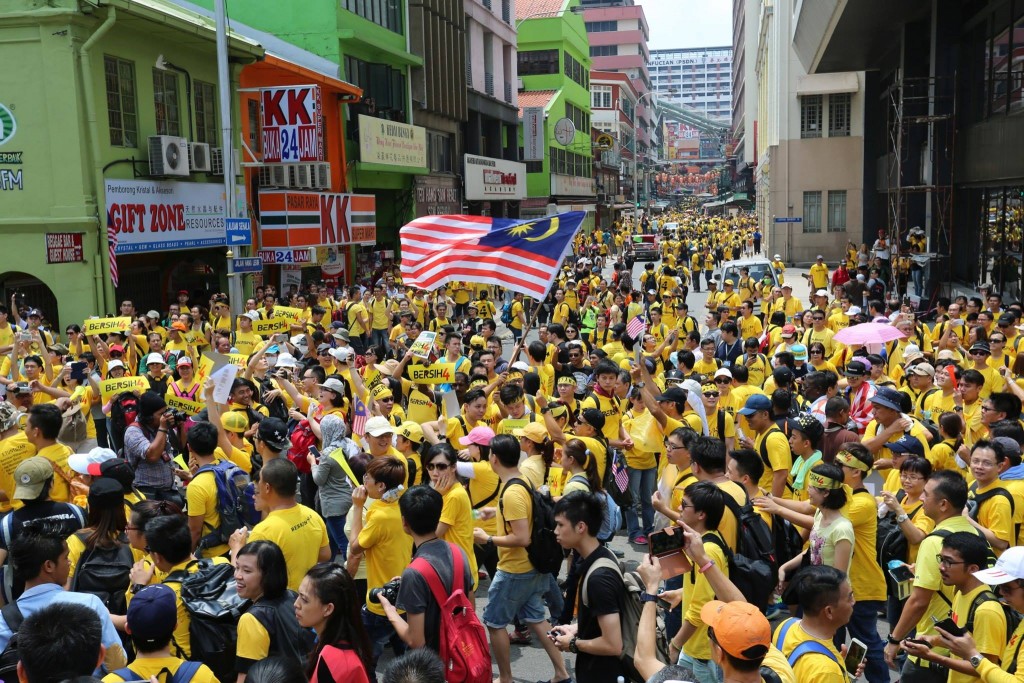
Two days ahead of Merdeka day (independence day) this Bersih rally was awash with Malaysian flags and people singing the national anthem. Crowds converging across from Pasar Seni (central market) just before 2pm.
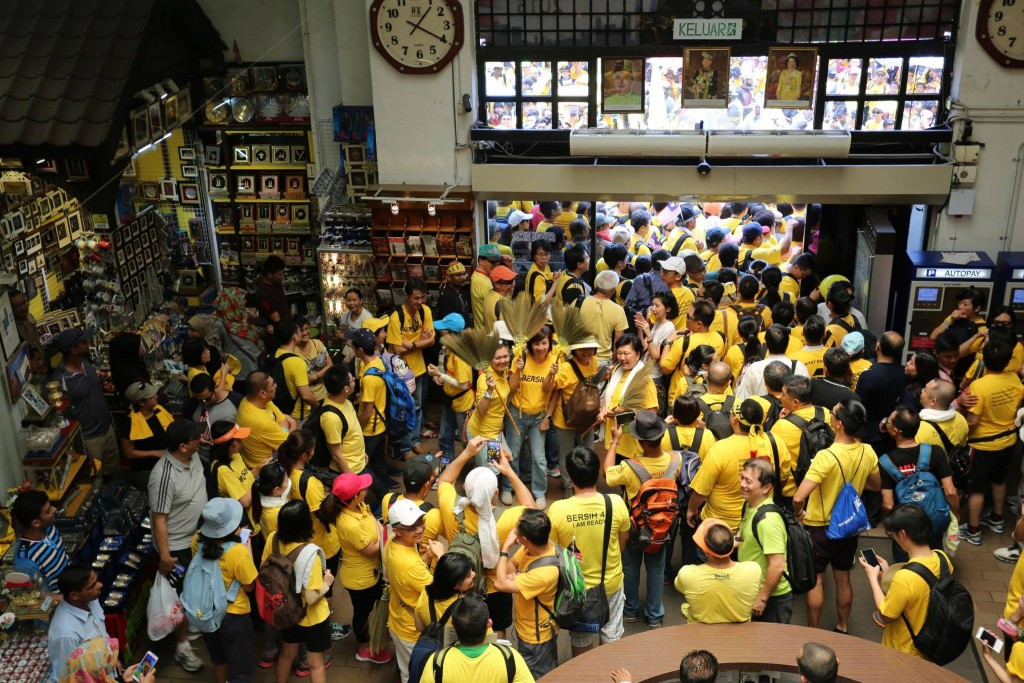
Pasar Seni (central market) was one of the staging sites with speeches and people converging. Many came into the market for some relief from the heat and humidity outside. Here is the entrance with some ladies posing with their brooms ready to sweep Malaysia clean! Stallholders look on bemused.
The 3G network was largely down by this time, probably due to overuse, making communication difficult. I was lucky to be allowed onto the Wi-Fi of a handicraft seller in the market to send tweets.
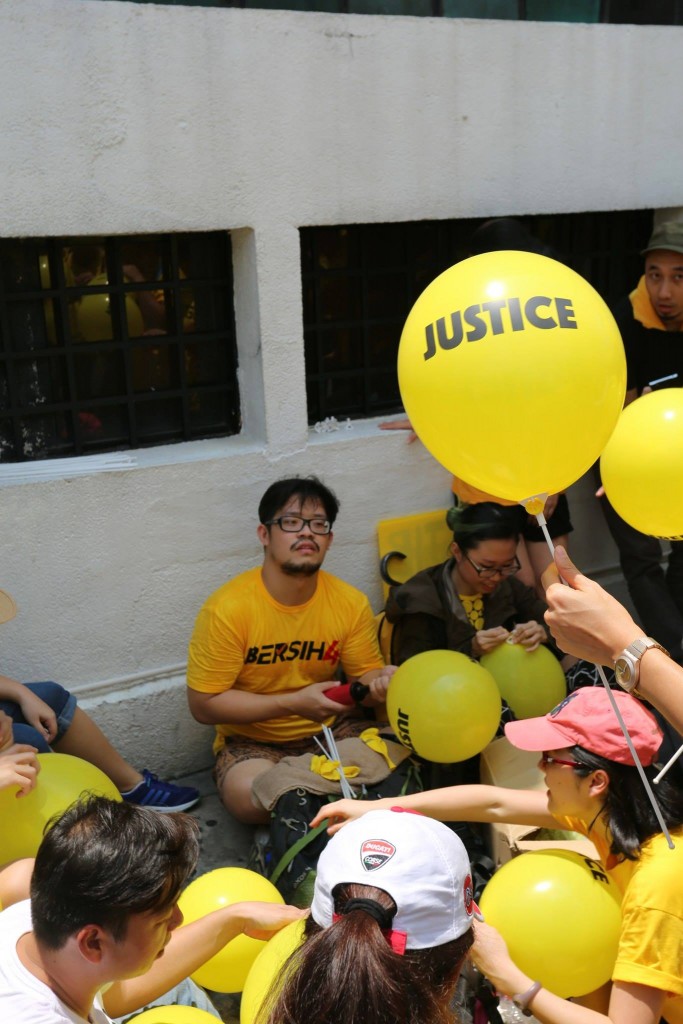
Pop! There goes justice…
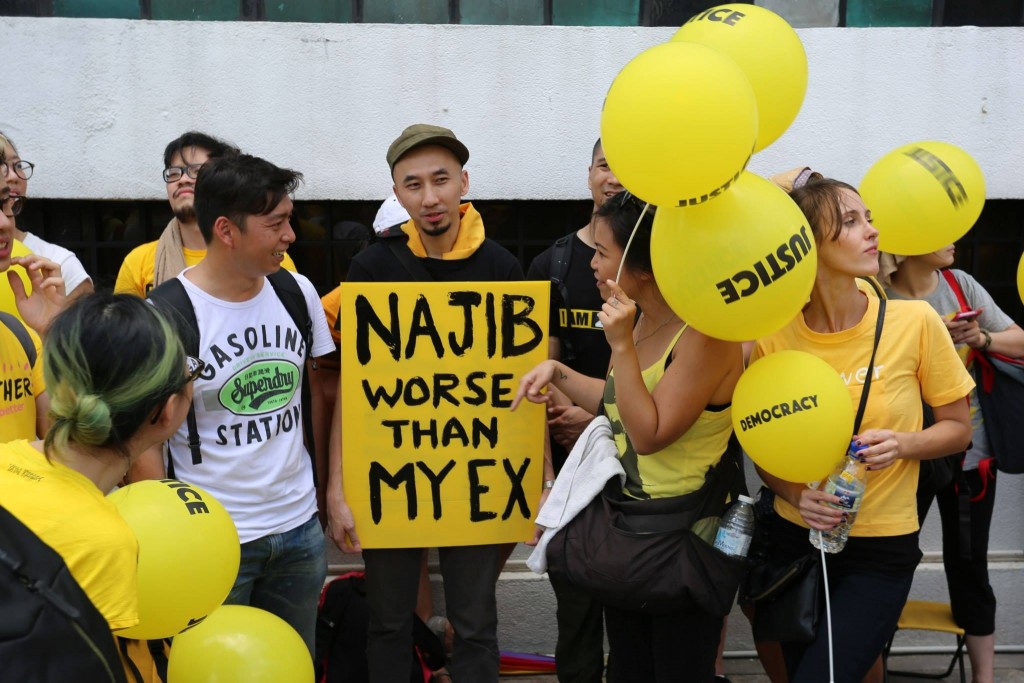
Festival atmosphere with witty signs and balloons. Every now and then a ‘justice’ or ‘democracy’ balloon would succumb to heat and pop. The irony was not lost on anyone. Just out of shot is a protester picking up rubbish, making sure this rally (and Kuala Lumpur) remain bersih (clean).
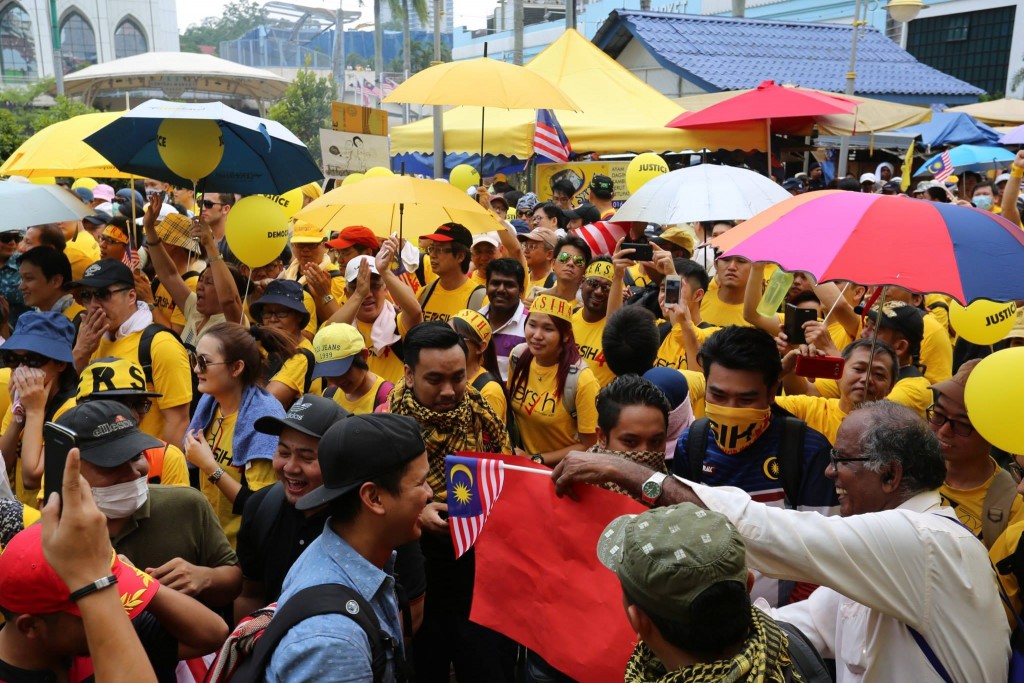
This picture captures the multi-ethnic make up of the protests outside Pasar Seni just as marchers take off towards Dataran merdeka. There were early reports that this was mostly a Chinese rally and coming through Chinatown this may have been correct, but once crowds converged near Masjid Jamek and Dataran Merdeka it was much more multi-ethnic. Even though the crowds were at a standstill and everyone was sweating in the relentless heat, people were in good spirits, singing, chanting and clapping.
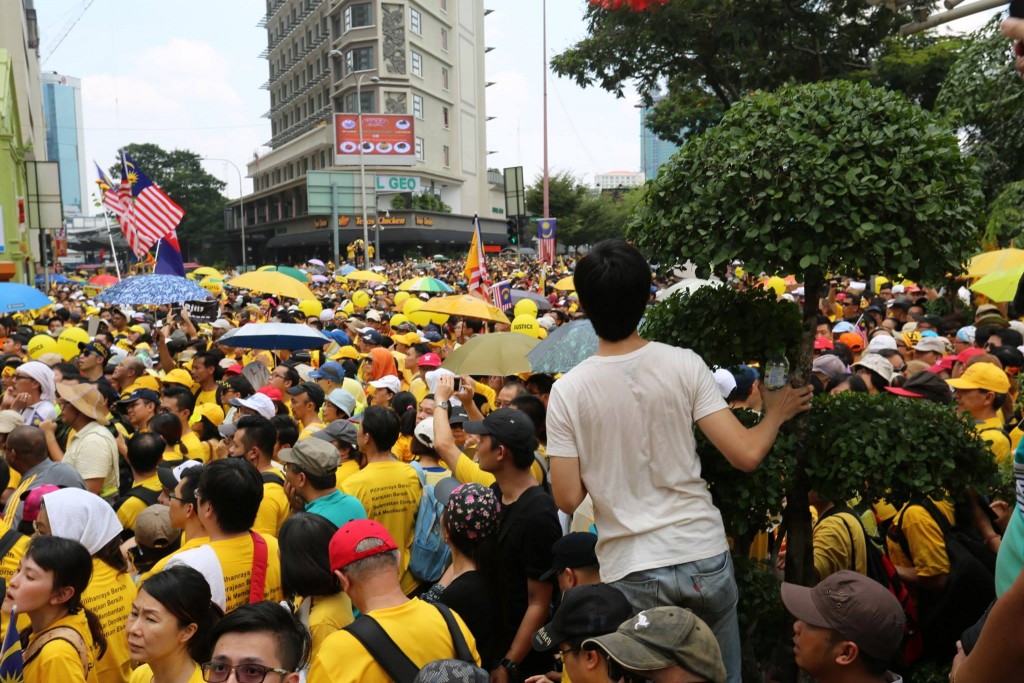
Still outside Pasar Seni just after 2pm and the rally has started, but no-one is moving. How far do the crowds stretch? Too far to see. It is a sea of yellow t-shirts, Malaysian flags and people making their way towards Masjid Jamek with speeches and chants along the way.
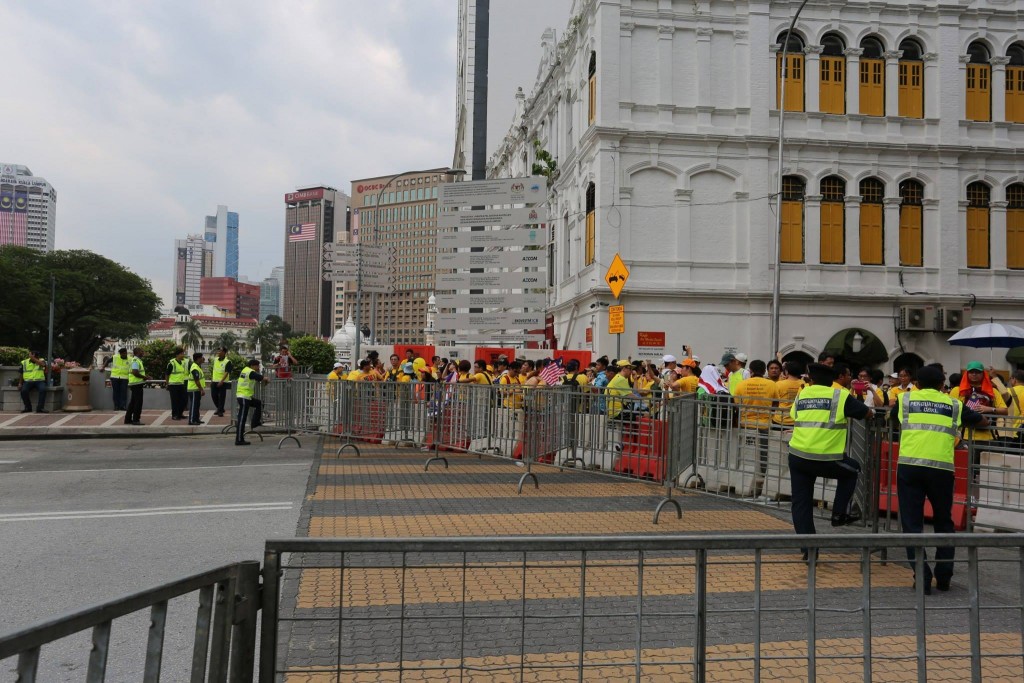
The police barricade on the bridge along Leboh pasar besar. No-one was allowed into the vicinity of Dataran merdeka (Independence square). On the other side of the bridge more police were milling about, with some wearing FRU (federal reserve unit) uniforms – they are the Malaysian riot police. At the barricades itself it was a relaxed atmosphere, with police chatting to protesters at times.
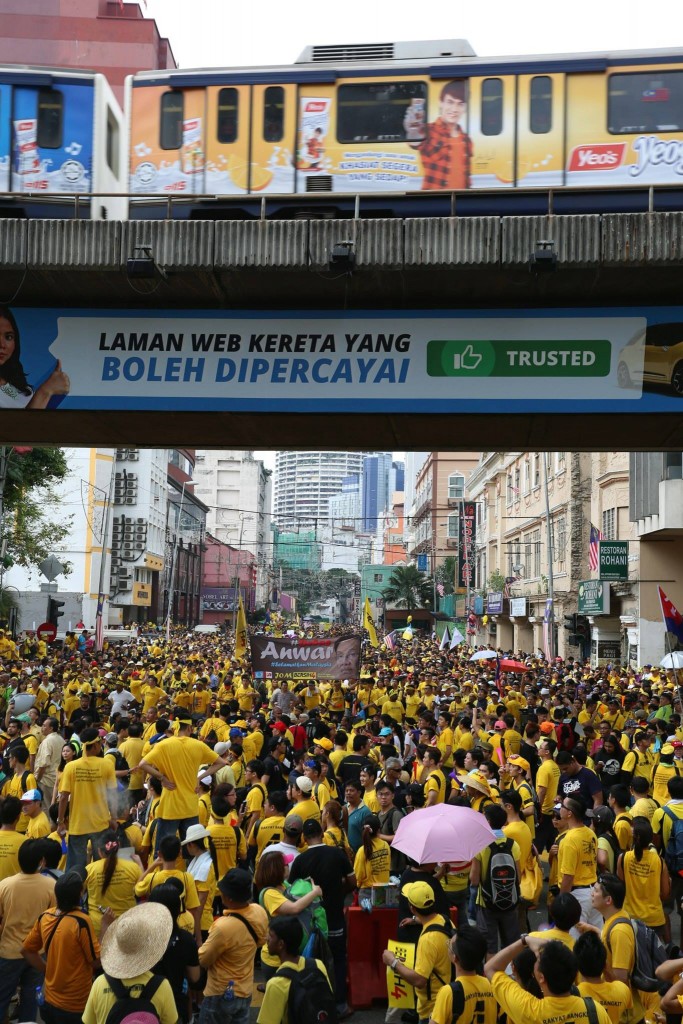
One of the few party political banners on show. Opposition party officials were prominent at the rally, giving speeches, but not dominating the rally. Some protesters I spoke to told me that: ‘of course, this rally is against the current government, so the opposition will be there, but that doesn’t mean we support them. We are here because things have gotten out of hand’. Such sentiments attest to the growing frustration of middle class Malaysians with a government that has overseen a weaker economy with growing pressures of living costs (an unpopular GST of 6 per cent and rising petrol prices).

This was the scene at around 4pm. Dataran merdeka is to the left, barricaded, and thousands of protesters continue to pile into the area from all other directions. Much was made of a brief visit to this site by former Prime Minister Mahathir Mohamad, who has emerged as a vocal critic of Najib. Of course, the supreme irony cannot be lost on anyone that a man who as Prime Minister cracked down on protesters, oversaw the dismantling of the independent judiciary and who cemented all power in the hands of the Prime Minister position now used people power to make his point that Najib had to go.
Gerhard Hoffstaedter is a lecturer in Anthropology in the School of Social Science at the University of Queensland. See more of his photos from the Bersih 4 rally on his Twitter feed.
 Facebook
Facebook  Twitter
Twitter  Soundcloud
Soundcloud  Youtube
Youtube  Rss
Rss 